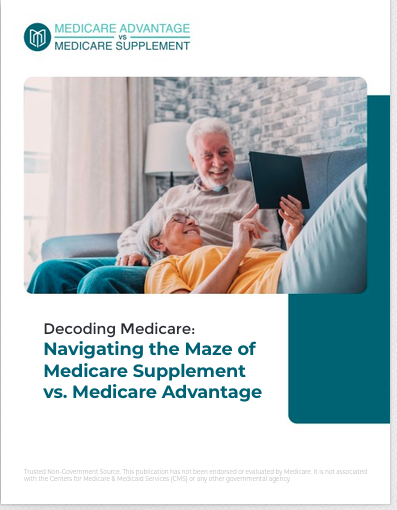Key Takeaways:
- Medicare Supplement Insurance, or Medigap, helps cover out-of-pocket costs not covered by Original Medicare.
- Understanding how Medigap works can significantly reduce your overall healthcare expenses.
Learn How Medicare Supplement Insurance Affects Overall Medicare Costs
Medicare Supplement Insurance, commonly known as Medigap, plays a crucial role in reducing the out-of-pocket costs associated with Original Medicare. This article will guide you through the basics of Medigap, how it works, and how it can help you manage your healthcare expenses more effectively.
What Is Medicare Supplement Insurance?
Medicare Supplement Insurance, or Medigap, is a type of health insurance policy sold by private insurance companies. It is designed to cover the gaps left by Original Medicare (Part A and Part B), such as copayments, coinsurance, and deductibles. Medigap policies are standardized and labeled with letters A through N, with each letter representing a different level of coverage.
How Medigap Works
Medigap policies work alongside Original Medicare. When you receive healthcare services, Medicare pays its share of the approved amount first, and then your Medigap policy covers the remaining costs, depending on the coverage provided by your specific plan. It is important to note that Medigap policies do not cover prescription drugs; for that, you would need a separate Medicare Part D plan.
Standardized Benefits
All Medigap policies offer the same basic benefits, but some plans provide additional coverage. For example, Plan F and Plan G cover excess charges that may arise when a doctor charges more than the amount Medicare will pay. The standardization of Medigap policies means that the benefits of a Plan G policy from one insurance company will be the same as the benefits of a Plan G policy from another company, although the premiums may vary.
The Role of Medicare Supplement Insurance in Reducing Out-of-Pocket Costs
Medigap can significantly reduce the out-of-pocket costs associated with healthcare services. Here’s how:
Coverage for Copayments and Coinsurance
Original Medicare requires beneficiaries to pay a portion of the costs for healthcare services in the form of copayments and coinsurance. Medigap policies cover these costs, reducing the amount you need to pay out-of-pocket. For example, if you have a hospital stay, Medicare Part A covers the majority of the costs, but you are still responsible for a daily coinsurance amount after a certain number of days. A Medigap policy can cover this coinsurance, saving you potentially thousands of dollars.
Deductible Coverage
Medicare Part A and Part B have deductibles that you must pay before Medicare starts to cover your healthcare costs. Medigap policies, such as Plan F and Plan C, cover these deductibles, reducing your out-of-pocket expenses. Although Plan F is no longer available to new enrollees after January 1, 2020, those who were already enrolled can continue to benefit from its comprehensive coverage.
Limiting Excess Charges
Some healthcare providers charge more than the amount Medicare approves for a service. These excess charges can add up, especially if you require frequent medical attention. Medigap plans like Plan G and Plan F cover these excess charges, protecting you from unexpected expenses.
Foreign Travel Emergency Coverage
Medigap policies can also provide coverage for emergency medical care during foreign travel, which is not covered by Original Medicare. Plans D, G, M, and N offer this benefit, covering 80% of the charges for emergency care during the first 60 days of a trip, after you meet a $250 deductible.
Comparing Medicare Supplement Insurance Premiums
While the benefits of Medigap policies are standardized, the premiums can vary significantly between insurance companies. Here are some factors that influence the cost of Medigap premiums:
Age and Gender
The cost of Medigap premiums often depends on your age and gender. Typically, premiums are lower for younger individuals and women. Some states offer community-rated pricing, where everyone pays the same premium regardless of age or gender.
Geographic Location
The cost of living and healthcare expenses vary by region, and this is reflected in Medigap premiums. For example, premiums in urban areas might be higher than in rural areas due to the higher cost of healthcare services.
Plan Type
The level of coverage provided by the Medigap plan also affects the premium. Plans that offer more comprehensive coverage, such as Plan G, generally have higher premiums than those with fewer benefits, like Plan A.
Underwriting Practices
Insurance companies may use medical underwriting to determine the cost of your Medigap policy. This means they assess your health status and medical history when setting your premium. However, during your initial enrollment period, you have a guaranteed right to buy a Medigap policy without medical underwriting, which can result in lower premiums.
Discounts and Special Offers
Some insurance companies offer discounts for various reasons, such as for paying premiums annually instead of monthly, or for non-smokers. It’s worth asking about any discounts that may be available to you when comparing Medigap policies.
How to Choose the Right Medicare Supplement Insurance Plan for Your Needs
Selecting the right Medigap policy involves considering your healthcare needs, budget, and personal preferences. Here are some steps to help you choose the best plan:
Assess Your Healthcare Needs
Consider your current health status and any ongoing medical conditions. If you frequently visit doctors or require specialist care, a plan with comprehensive coverage, like Plan G, might be more cost-effective in the long run.
Evaluate Your Budget
Determine how much you can afford to pay in premiums each month. While plans with higher premiums often offer more comprehensive coverage, they might not be necessary if you are generally healthy and do not require frequent medical care.
Compare Plans and Providers
Use the Medicare Plan Finder tool to compare Medigap policies and premiums from different insurance companies. Remember, the benefits are standardized, so focus on finding a reputable insurance provider with competitive premiums.
Consider Enrollment Periods
The best time to purchase a Medigap policy is during your initial enrollment period, which starts the month you turn 65 and are enrolled in Medicare Part B. During this time, you have a guaranteed right to buy any Medigap policy without medical underwriting, ensuring you get the best rates.
Seek Professional Advice
If you are unsure which Medigap plan is best for you, consider consulting with a licensed insurance agent. They can provide personalized advice based on your specific needs and help you navigate the complexities of Medicare Supplement Insurance.
Making Informed Decisions About Medigap
Medicare Supplement Insurance, or Medigap, can significantly reduce your out-of-pocket healthcare costs by covering the gaps left by Original Medicare. By understanding the different plans available and comparing premiums, you can choose a Medigap policy that fits your healthcare needs and budget. Planning ahead and making informed decisions about your healthcare coverage can lead to substantial savings and better financial security in the long run.
Contact Information:
Email: [email protected]
Phone: 6026285580










